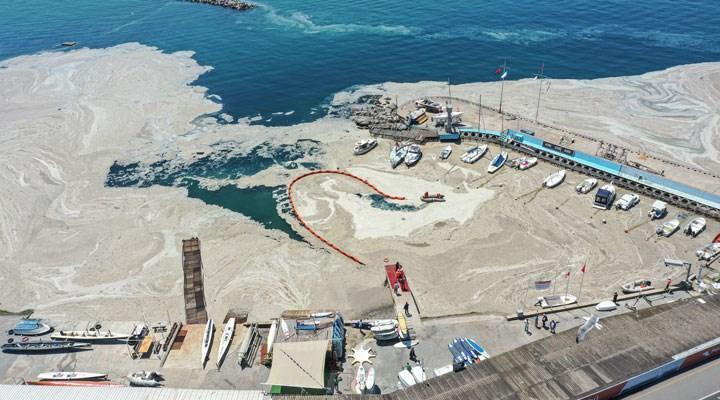Risks of mucilage invasion in Marmara Sea to be mapped
ANKARA

For the first time, the dangers associated with marine mucilage have been investigated by the unmanned underwater glider "Sea Explorer" in the Marmara Sea, and a comprehensive mucilage mapping that offers insightful information will be produced with the help of the findings.
The unmanned underwater glider, which was given to METU Insititute of Marine Sciences Institute by Türkiye İş Bankası, was launched in the Marmara Sea again during the critical period when oxygen levels dropped to its lowest.
With the help of the research’s results, a comprehensive mucilage mapping will be created for the first time in the country.
Speaking during a press conference, Barış Salihoğlu, head of METU Institute of Marine Sciences, stated that the underwater glider’s Marmara Sea study consisted of two phases, aiming to understand the dynamics of the Marmara Sea during two different time periods. The data collected provides critical information for developing solutions in seas prone to mucilage phenomena and waters with low oxygen levels.
“In the first phase, the device was used as a fixed measurement station and dived to a depth of 900 meters, and the effect of the jet stream coming out of the Bosphorus was observed for 24 hours. In the second phase, measurements were made along a 76-kilometer-long line stretching from east to west. Data was collected at a depth of 50 meters to observe the two-layer system specific to the Marmara Sea,” he said.
According to Salihoğlu, the results of the study showed that many areas in the Marmara Sea were oxygen-poor, even under winter conditions. In contrast, an inflow of oxygenated Mediterranean bottom water was observed in the southern region, including the Bandırma and Edremit bays. However, this effect disappeared heading eastwards, showing that sufficient oxygen transport to areas such as the Gulf of Izmit will remain very limited even during winter, posing a threat to marine life in the Marmara Sea.
















